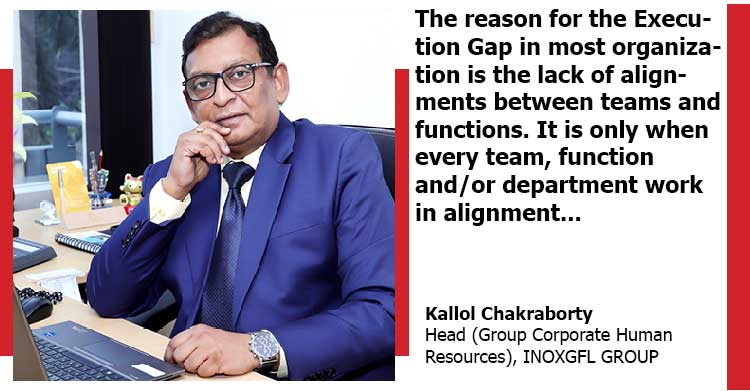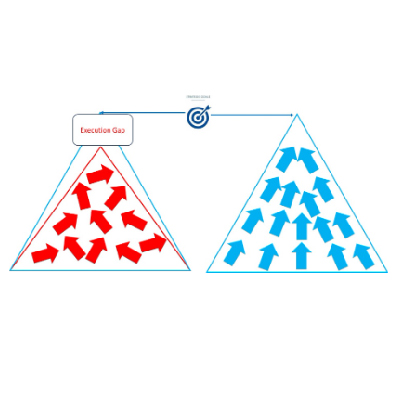The reasons for the Execution Gap in the organization | Kallol Chakraborty | Head (Group Corporate Human Resources) | INOXGFL GROUP

The reason for the Execution Gap in most organization is the lack of alignments between teams and functions. It is only when every team, function and/or department work in alignment and in synergy will the organization achieve its strategic goals.

Studies show that two-thirds to three-quarters of large organizations struggle to implement and execute their strategies. According to the Harvard Business White Paper ‘Why Strategy Alignment Matters-and How to Achieve It’ “To successfully execute a new strategy in today’s fast-changing business landscape, organizations must accelerate the pace of building critical senior-level alignment and ownership around the strategy’s vision, goals, and approach to change. Only then can they cascade the new strategy down to every level and out to every corner in the organization”. The first step towards bridging the Execution Gap is to bring alignment.
Having done that, employees must know whether they are winning or losing the game! And they must be clear that if they are winning, then how they would be awarded at the end of the Game! So, designing an award system aligned with the business goals goes a long way to bring in the competitiveness in teams to win the Game. It brings in a sense of belongingness in employees as they not only know what they are supposed to do for the organization to succeed, but also are clear about “what is there in it for me”.
Aligned goals ensure synergistic working. Success and failure need to be equally shared. In sports a team wins or loses as a team. So must it be in the corporate world. I have seen in many organizations where rewards on winning are differentiated. This itself is against the spirit of teamwork and cohesive working – on the ground every player in the team is important and has to play his assigned role. Rewards when announced which are linked to achievement of business goals and are above board all across brings in camaraderie and collaboration so essential to win in the competitive business environment. Collaboration, particularly cross-functional collaboration is what matters most to drive execution of strategy.
Finally, to have a real impact on how each individual player or team would play the game to succeed it is very important to have a scorecard which tells the team or the individual player at every moment whether he/they are winning or losing. Strategy execution happens on the ground – on the playing field and players adjust their game looking at the ScoreBoard. The strategy goals, the award and the scoreboard must be all aligned – if the scoreboard moves, so should the award and so must the goal achievement. Establishing this connectivity and visibility is a must to trigger performance at all levels through an award system.
Execution undoubtedly comes from the middle and lower levels of an organization. In large organizations, execution lives and dies with middle managers or “distributed leaders” according to the study. Concentration of power at the top inevitably slows down execution. Nobody makes a move unless the top person says so. All that talent and creativity in the organization is wasted waiting for the top executive(s) to make the next move. While execution can be guided from the top based on the strategy, it should be driven and owned by the middle managers or “distributed leaders” into their functional organizations.
Across any business , a strategy without execution is just an exciting story – and action without a strategy is just aimless wandering. Having an award system in line with the above will bring in teamwork, alignment, ownership and pride in winning across all levels of the organization. A game is won when the whole team plays to win and knows the reward of winning. Game on!


